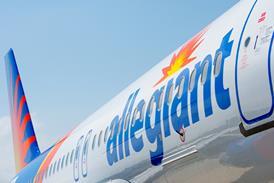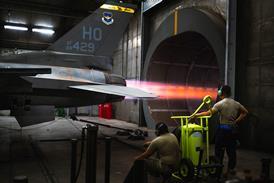Boeing expects its short takeoff and vertical landing (STOVL) JSF to make its first vertical landings "in the next couple of weeks". The company has flown its X-32B aircraft to the US Navy's test base at Patuxent River Naval Air Station in Maryland to use specially constructed facilities, including a hover pit. Spokesman ‘Chick' Ramey says the test programme is on schedule to complete its flight test programme by the "end of July time frame". The flight to Pax River from Edwards Air Force Base, California, follows closely on the heels of a JSF programme "first" - airborne transition from conventional to STOVL mode, during high altitude test flights. "Transition is really the key to STOVL - hovering is not that big a deal. We have smoothly transitioned to STOVL from conventional flight and back again a couple of times." Frank Statkus, Boeing vice - president and JSF general manager, said the completion of milestones in the coming weeks, including the first hover and vertical landing, will further prove that the company¹s direct-lift design is "simple, reliable, low risk and the best system for the STOVL flight requirement." Boeing's STOVL concept is an evolution of the system used on the famous Harrier ‘jump jet' and uses a number of two-dimensional rotating nozzles in the fuselage and wings to direct thrust from the engine towards the ground. The aircraft uses a Pratt & Whitney F119 derivative engine. "In the conventional mode the X-32B flies remarkably like the simulator and the X-32A," says Maj Jeff Karnes, US Marine Corps, who piloted the X-32B on its final leg to Pax River. "We've been able to accomplish a lot of test points in a short period due to the teamwork of both government and contractor members of the Boeing integrated flight test team." The X-32B's four-month test programme that will include approximately 55 flights totalling about 40h. The aircraft completed 14 flights at Edwards Air Force Base, with five different pilots at the controls.
Source: Flight Daily News























